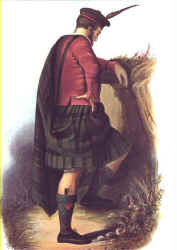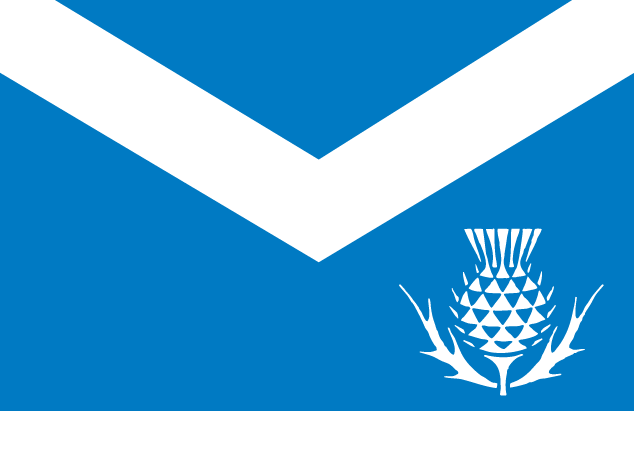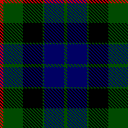
Clan Gunn

History
Clan Gunn claims descent from the Norse Jarls or Earls of Orkney and from the ancient Celtic Mormaers of Caithness through Ragnhild, daughter of Moddan in Dale, son of Moddan, Mormaer (High Steward) of Caithness, who was killed in 1040, and granddaughter of Saint Rognvald, Jarl of Orkney, who married Gunni, the reputed name-father of the Clan. Gunni was himself a grandson of Sweyn Asleif's-son, the 'Ultimate Viking' and hero of the Orkneyinga Saga.Sweyn Asleif's-son had his long hall on the island of Gairsay, off the east coast of the Mainland of Orkney and lands in Caithness at Freswick, a few miles south of Duncansbay. The principal Gunn lands were, however, acquired through Ragnhild, who inherited great estates in Caithness and Sutherland on the death of her brother, Harold Ungi, Jarl in Orkney and Earl of Caithness in 1198.
These were inherited by Snaekoll (White head) Gunni's-son the second chief of the Clan. His rights to the Norse Earldom were, however, forfeited as he had murdered John, the then Jarl in Orkney, over a land claim dispute arising from their mutual descent from the ancient Jarls of Orkney. Thus from the middle of the 13th century the Gunns were essentially a Caithness family.
At this time Clan Gunn were at the height of their power. They appeared to possess virtually the whole of Caithness, which was then passing from the influence of the Norse Earldom to that of the King of Scots. Snaekoll Gunni's-son is reputed to have built Castle Gunn at Bruan, on the east coast of Caithness south of Wick. There is a tradition that Castle Gunn was destroyed by the King of Norway, whose daughter one of the Gunn chiefs had married, though he already had a wife at Castle Gunn. When the second wife sailed to Caithness to join her husband, the Gunn clan arranged for the beacon to be placed on a dangerous rock at Ulbster and so wrecked the ship and all aboard were drowned. The castle was destroyed in revenge and the Gunn chief and his retainers were slain.
Little is known of the history of the Clan during the 13th and 14th century and it is not until the 15th century that history records the exploits of the Clan and its chiefs. Nonetheless, it is clear that during the 14th and 15th centuries the Gunns were gradually dispossessed of their lands in the fertile parts of Caithness by the Sinclairs, Keiths and others, who obtained grants of land from the Scottish kings, anxious to increase their influence over the fringes of their kingdom. Consequently by the mid 15th century George Gunn of Ulbster, Chief of Clan Gunn and Crowner of Caithness, held his main lands at Ulbster and Clyth on the rocky coast of Caithness, and the majority of the Clan by then occupied the highland regions of Caithness in what are now the Parishes of Latheron, Halkirk and Reay.
It was George Gunn, the Crowner, also known as "Am Braisdeach Mor", or "Big Broochy" from the insignia worn by the Gunn Chiefs, as Crowners of Caithness, who after many skirmishes with Clan Keith over rival land claims sought to reach a conciliation with the Keiths at St. Tayre's Chapel, near Ackergill Tower, the seat of Keith of Ackergill in 1478 (other say 1464) and was killed in the unequal battle at the chapel where the Keiths arrived for the twelve-aside parlay with two men to each horse. In 1978 the Earl of Kintore, Chief of Clan Keith and Iain Gunn of Banniskirk, the Commander of Clan Gunn, signed a Treaty of Friendship between the two clans at the site of the chapel, bringing to end the 500 year old feud.
After the death of George, the Crowner, and his sons at Ackergill, the Clan split into three distinct families — James or Seumas, the Crowner's eldest son who survived the battle, moved with his family to Kildonan in Sutherland, subsequently known as Gleann na Guineach or Gunn's Glen, where he obtained lands from the Earls of Sutherland; Robert, the second surviving son established his line in Braemore, in the southern heights of Caithness as the Robson Gunns, and John, the third surviving son settled in Cattaig or Bregual in Strathmore, in the higher reaches of the River Thurso above Westerdale.
The Hendersons and Williamsons and Wilsons of Caithness are said to be descended from Henry and William, two of the Crowners' younger sons. Other Gunn families established themselves at Crosskirk, near Forss, on the North coast of Caithness and in Reay, Strathy and Strath Halladale in the MacKay country. The various chieftains leased their lands from the Chiefs of Clan Sutherland and Clan MacKay and in turn sublet these to their immediate families who subdivided them among their families. There was, however, a surprising amount of movement from one part of the country to another and so it cannot be assumed that all Gunns in one area were necessarily all of the same branch of the family.
Indeed many clansmen do not bear the surname of Gunn. Surnames were not commonly used until comparatively recent times. They would have been of little use where everybody was of the same clan. A man or a woman was therefore known as John or Jean mac Sheumais or mac Dhaidh, son or daughter of James or David, of Clan Gunn, and when a surname came to be used many adopted their father's name and hence John or Jean Robson, Georgeson, Williamson etc.
The Mac Sheumais (or McHamish) Gunns continued to live in Strath Kildonan, first at Killearman and later at Badenloch at the top of the Strath, until the old line died out in 1782.
The chiefship of the Clan has been dormant since the death of the son of George Gunn of Rhives in 1874. The head of the Clan, in the absence of a recognized chief is Iain Gunn of Banniskirk, who has been appointed Commander of the Clan by the Lord Lyon King of Arms at the request of the landed and armigerous members of the Clan.
The Clan Gunn Society which was formed in 1960 to promote a spirit of kinship among members of the clan throughout the world acquired the Old Parish Church at Latheron as a Clan Heritage Center. The Clan gathers in Caithness every three years.
Taken from The Clan Gunn and Its Country, published by the Clan Gunn Heritage Center, Latheron, Caithness.

